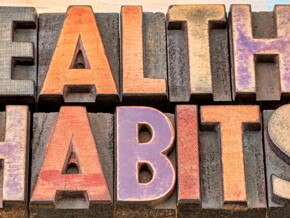
Your Guide to Sugar Reduction to Raise Healthier, Happier Eaters
Sugar reduction efforts in your child's diet can be tricky. As research shows, children have a penchant for sweet tastes, particularly in the first 20 months. If your child has a serious sweet tooth, it can feel even more frustrating. Plus, sugar sneaks into many foods, from sauces to cereals and even so-called healthy snacks.
Don't stress over strict rules if you want to cut back on sugar. It's more helpful to know which types of sugar to avoid and how to spot them in your everyday foods. Here's how you can get started.
Know How Much Sugar Can Children Have
You and your family come across different types of sugar in everyday foods. There's naturally occurring sugar found in whole fruits, vegetables, and dairy. Then there's "free sugar," which is added during processing or cooking or present in food items like honey, syrups, fruit juices, and fruit juice concentrates.
Experts say it's the free or added sugar that poses a problem for young kids. According to the World Health Organization (WHO), adults and children should cut down their added-sugar intake to less than 10% of their total energy intake (the sum of daily calories consumed from food and drinks).
WHO adds that it's even better if you can reduce sugar consumption to less than 5%, roughly 25 grams or about 6 teaspoons of added sugar. This figure matches the daily intake recommended by the American Academy of Pediatrics (AAP) for children 2 years and older.
Studies on oral health highlight the importance of a 5% sugar reduction. Researchers have linked sugar to dental problems, like cavities, that continue into adulthood. Research also shows added sugar raises your child's risk of obesity, high blood pressure, and Type 2 diabetes.
Check Your Groceries for Hidden Sugar

Read the labels when you pick out healthy snacks for kids.
You don't have to overhaul your kitchen or say goodbye to all your child's favorite foods. Once you know how much your child can have, sugar reduction now means checking for what you have in your grocery cart.
Read nutrition facts labels carefully.
You can spot "Total Sugars" on the nutrition label. This number includes natural and added sugars, helping you calculate the added sugar you give your kids.
Also, pay attention to the serving size. If one serving has 10 grams of added sugar, that's 20 grams if your child eats two servings. Nutrition labels also list ingredients in order from the highest to the lowest amount.
Know the names of "hidden sugar."
Added sugar comes in many forms and names. Look out for these ingredients on product labels when grocery shopping.
- Brown sugar
- Corn sweetener
- Corn syrup
- High-fructose corn syrup
- Honey dextrose
- Fruit juice concentrates
- Invert sugar
- Malt sugar
- Molasses
- Raw sugar
- Sucrose or table sugar
- Turbinado
Dr. Maria Luisa B. Caparas-Panlilio DPPS, MSc (Public Health Nutrition) advises choosing milk with lactose, a naturally-occurring sugar, instead of sucrose for preschoolers and up. She adds that the first three ingredients on the nutrition label ideally contain milk protein. "Otherwise, the milk may just be a product prepared from adjusted ratios of sugar and fat to optimize palate pleasure."
Triple check "sugar-free" claim
Be careful of labels that say "sugar-free" or sugar-free snacks, as they may contain sugar substitutes. The American Academy of Nutrition and Dietetics does not recommend sugar-sweetened beverages and those sweetened with low- and no-calorie sweeteners for children and adolescents.
Make realistic food swaps.
Let sugar reduction happen gradually. Start with low-sugar recipes and food swaps that still satisfy your child’s sweet tooth. Here are some ideas for your school-age kids:
- Replace sugary cereals with whole-grain cereals topped with fresh fruit.
- Swap flavored yogurt with plain yogurt and add natural sweetness with natural sugar substitutes like honey or fruits.
- Choose real fruits over fruit-flavored snacks.
- Use natural sweeteners like crushed berries instead of syrup on pancakes or waffles.
- Instead of jam, use pureed fruits as a spread on toast.
Why Sugar Reduction Can Feel Like an Uphill Battle

Studies have shown it may take 10 to 20 exposures for a child to accept a new food.
If cutting back on sugar feels harder than it should, you're not alone. These science-backed reasons illustrate why many parents run into resistance when it comes to changing eating habits.
Tension at the table makes healthy eating harder.
A review of 19 studies in the journal Foods shows kids tend to resist trying something new even more when meals become stressful, whether it's from pressure to eat or frustration at the table.
Plus, children are always watching—and learning from—from your eating habits. When they see you enjoy your meals, your child learns healthy food is delicious and something the whole family can all enjoy together.
Lack of variety can make unfamiliar foods less appealing.
If your child isn’t regularly seeing (or tasting) a variety of foods, they become disagreeable with anything new or unfamiliar.
One study published on Appetite found that kids aged 4 to 6 focus on how fruits and vegetables look, like their color or shape. So, when they didn't want to eat a fruit, it was more about how unfamiliar or "different" it seemed rather than the taste.
Based on the study, the key to picky eating may be repetition. The more often kids are exposed to a particular food, the more likely they are to accept and even enjoy it over time.
Kids naturally crave sweet things.
Remember, children are biologically wired to prefer sweet and salty flavors. So, when trying to shift toward less sugary foods, you're working against a built-in preference.
All of these factors can make sugar reduction feel like an emotional and practical maze. But understanding why your child might push back can help you approach things with more patience and less pressure.
Sugar can have a place in your child's diet. Understanding how much sugar is actually okay lets you make better choices. With small and steady sugar reduction changes, you and your kids can enjoy happier and healthier mealtimes.
Join ParenTeam's Facebook group to share and discover more parenting tips for your growing kids!
References
American Heart Association. “Understanding Food Nutrition Labels,” August 3, 2023. Accessed April 7, 2025. https://www.heart.org/en/healthy-living/healthy-eating/eat-smart/nutrition-basics/understanding-food-nutrition-labels.
“FS1305: Added Sugars: Hidden in Plain View (Rutgers NJAES),” n.d. https://njaes.rutgers.edu/fs1305/.
Oster, Emily. “Are My Kids Eating Too Much Sugar? | ParentData by Emily Oster.” ParentData by Emily Oster, November 18, 2024. https://parentdata.org/are-my-kids-eating-too-much-sugar/.
Program, Human Foods. “Added Sugars on the Nutrition Facts Label.” U.S. Food And Drug Administration, March 5, 2024. https://www.fda.gov/food/nutrition-facts-label/added-sugars-nutrition-facts-label.
Robert Wood Johnson Foundation. “Developing Taste Preferences.” Healthy Eating Research, August 2021. Accessed April 7, 2025. https://healthyeatingresearch.org/wp-content/uploads/2021/08/Taste-Preferences.pdf.
Diabetes. “Spotting Hidden Sugars in Everyday Foods,” June 17, 2024. https://www.cdc.gov/diabetes/healthy-eating/spotting-hidden-sugars-in-everyday-foods.html.
Karolina Krupa-Kotara et al., “Food Neophobia in Children Aged 1–6 Years—Between Disorder and Autonomy: Assessment of Food Preferences and Eating Patterns,” Nutrients 16, no. 17 (September 6, 2024): 3015, https://doi.org/10.3390/nu16173015.




























